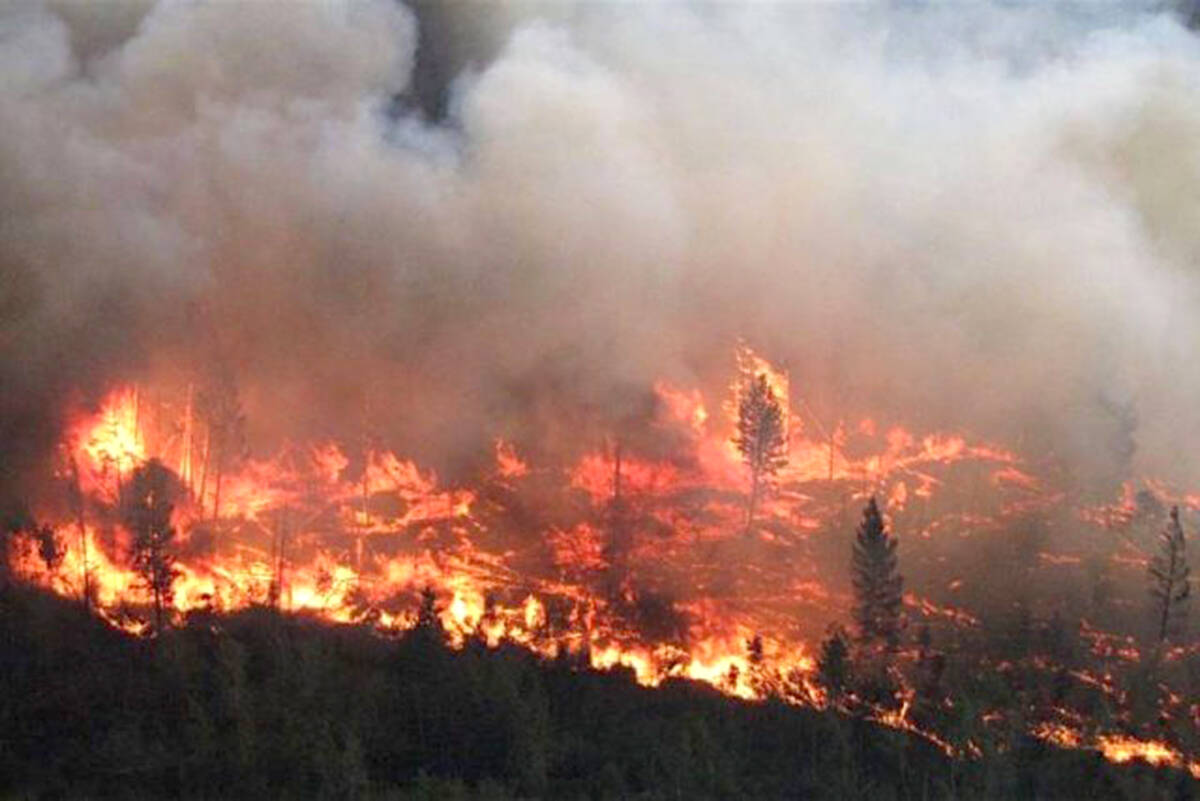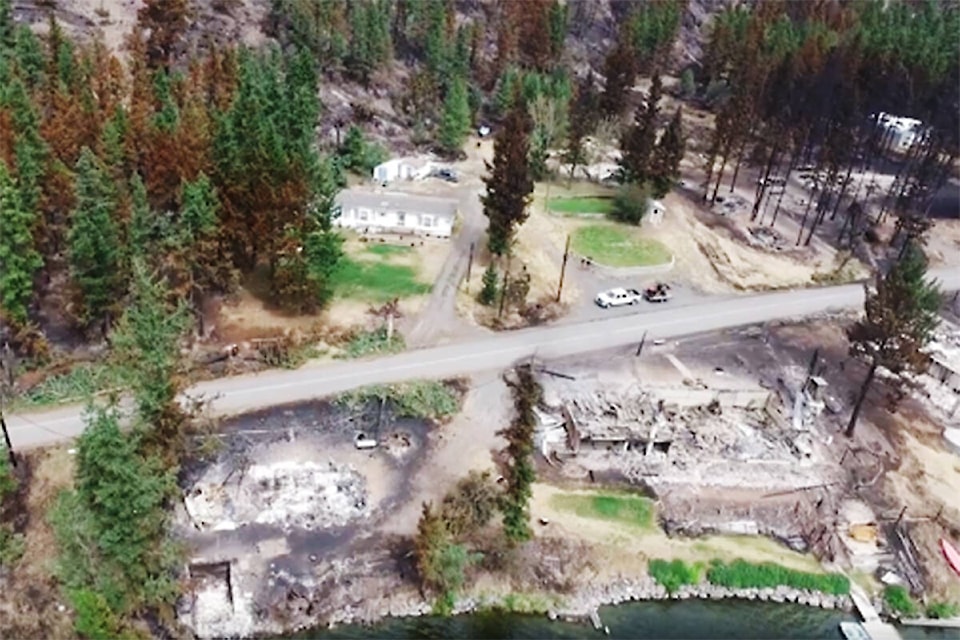The Elephant Hill wildfire in 2017 has changed the watershed of the Bonaparte River, says newly published research.
In addition to the immediate impact on vegetation, the fire will have longer-term effects on the river and the entire watershed flowing into the North Thompson River, said Dr. Alessandro Ielpi, an assistant professor in geomorphology at the University of British Columbia Okanagan’s Irving K. Barber Faculty of Science.
“It takes a few years to gain a full picture of how a wildfire has impacted a river,” said Dr. Ielpi, whose research was recently published in the scientific journal Catena.
In the case of the Elephant Hill fire, about half of the entire Bonaparte watershed was burned to some degree, he pointed out.
The wildfire started on July 6, 2017, about 2.5 kilometres southwest of Ashcroft. It burned for three months, scorching 1,900 square kilometres of forests, grassland and properties from Ashcroft north to the Pressy Lake and Sheridan Lake areas south of 100 Mile House. The fire burned at least 123 homes and caused more than $27 million in damage to insured homes, businesses and vehicles, according to the Insurance Bureau of Canada.
Over the course of the past few years, Dr. Ielpi and his research collaborator, Mathieu Lapôtre, an assistant professor in earth and planetary sciences at Stanford University, have tracked changes to the riverbanks along the Bonaparte, using satellite and aerial images of the channel from before the fire and after in 2019 and 2021.
The first and most immediate impact of the fire was large-scale flooding along the river, which affected Cache Creek.
“This is a direct consequence of the fact that you have removed vegetation from the hill slopes in the watershed and so vegetation can not retain any more rain water or runoff from snowmelt,” Dr. Ielpi said. “So all the water that was retained and absorbed and processed and used by vegetation, now, it’s just being passed all in once down the slopes and towards the river.”
Their research also found the pace of erosion along the banks of the Bonaparte more than doubled, increasing by 230 per cent. Due to the sediment and sand sloughing into the waterway, the river widened by 130 per cent to compensate, he said.
“It generally isn’t until two or three years later that you really start to see what’s happening,” he says. “And what we saw is that the channel expanded and widened in response to the addition of sediment from burnt slopes. And it also accelerated its pace of erosion—the speed at which it erodes banks and moves across the floodplain has accelerated substantially.”
Those who live nearby and depend on the river will feel the impacts of these changes, including farmers and Indigenous communities such as the Bonaparte First Nation, Dr. Ielpi said.
The good news, Dr. Ielpi said, is that the rivershed will repair itself over the coming 10 to 50 years.
He said it’s important to understand these longer-term effects of wildfire in order to plan for and mitigate for them, especially with the number of wildfires now burning in B.C. every year.

